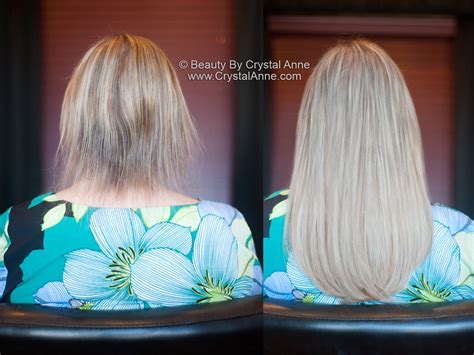Transform Your Tresses: Extensions for Fine Hair That Work
Fine hair can be a blessing and a curse. While it’s delicate and prone to breakage, it also provides a blank canvas for styling versatility. The addition of extensions can take your fine hair to new heights, adding fullness, length, and a touch of glamour.

Choosing the Right Extensions
With so many extension options available, selecting the best ones for your fine hair can be daunting. Here are the most popular types to consider:
Clip-In Extensions
- Advantages: Quick and easy to apply, non-permanent, affordable
- Disadvantages: Visible clips, not suitable for very thin hair
Tape-In Extensions
- Advantages: Flatter lying, less visible, can last up to 6 weeks
- Disadvantages: More expensive, requires professional installation and removal
Keratin Bond Extensions
- Advantages: Long-lasting (up to 4 months), blend seamlessly with natural hair
- Disadvantages: Requires professional application and removal, can damage hair with improper installation
Micro-Loop Extensions
- Advantages: Tiny loops minimize visibility, gentle on hair
- Disadvantages: Time-consuming to install, requires regular maintenance
Enhancing Volume and Length
Once you’ve chosen the right extensions for your hair, it’s time to embrace their transformative power.
Add Volume
- Clip-In Toppers: Place a small topper extension at the crown of your head to instantly boost volume without affecting length.
- Double Drawn Extensions: Choose extensions that are “double drawn,” meaning all hair fibers are cut to the same length for a fuller appearance.
- Layer Different Lengths: Mixing shorter and longer extensions creates depth and adds perceived volume.
Extend Length
- Match Your Texture: Select extensions that match the texture of your natural hair for a seamless blend.
- Use Fine Extensions: Opt for finer extensions to prevent weight and bulkiness.
- Add Length Gradually: Start with smaller wefts and gradually add more to achieve your desired length.
Common Mistakes to Avoid
- Over-Extension: Don’t add too many extensions or you’ll risk damaging your fine hair.
- Poor Installation: Ensure proper installation by a professional to avoid breakage and discomfort.
- Ignoring Maintenance: Extensions require regular brushing, washing, and conditioning to maintain their longevity.
- Using Heat Too Often: Limit the use of heat styling tools to protect extensions and prevent damage.
- Sleeping with Extensions In: Remove extensions before bed to prevent tangles and breakage.
Pros and Cons
| Pros | Cons |
|---|---|
| Instant volume and length | Can be expensive |
| Non-permanent options available | Requires regular maintenance |
| Can be color-matched | Can damage hair if installed improperly |
| Versatile styling possibilities | Not suitable for all hair types |
FAQs
1. What is the best type of extension for fine hair?
Tape-In or Micro-Loop extensions are ideal for fine hair due to their flatter profile and gentle application methods.
2. How often should I wash extensions?
Wash extensions every 7-10 days to prevent dirt and product buildup.
3. Can I curl or straighten extensions?
Yes, but avoid overusing heat styling tools. Use lower temperatures and apply a heat protectant spray.
4. How long do extensions last?
Extension longevity varies depending on the type, maintenance, and frequency of use. Clip-In extensions can last up to 6 months, while Keratin Bond extensions can last up to 4 months.
5. Can I dye extensions?
Professional colorists can safely dye or tone extensions to match your hair color. However, it’s best to avoid drastic color changes.
6. How much do extensions cost?
Extension costs vary based on the type, length, and quality. Expect to pay anywhere from $500 to $2,000 for a full head of extensions.
